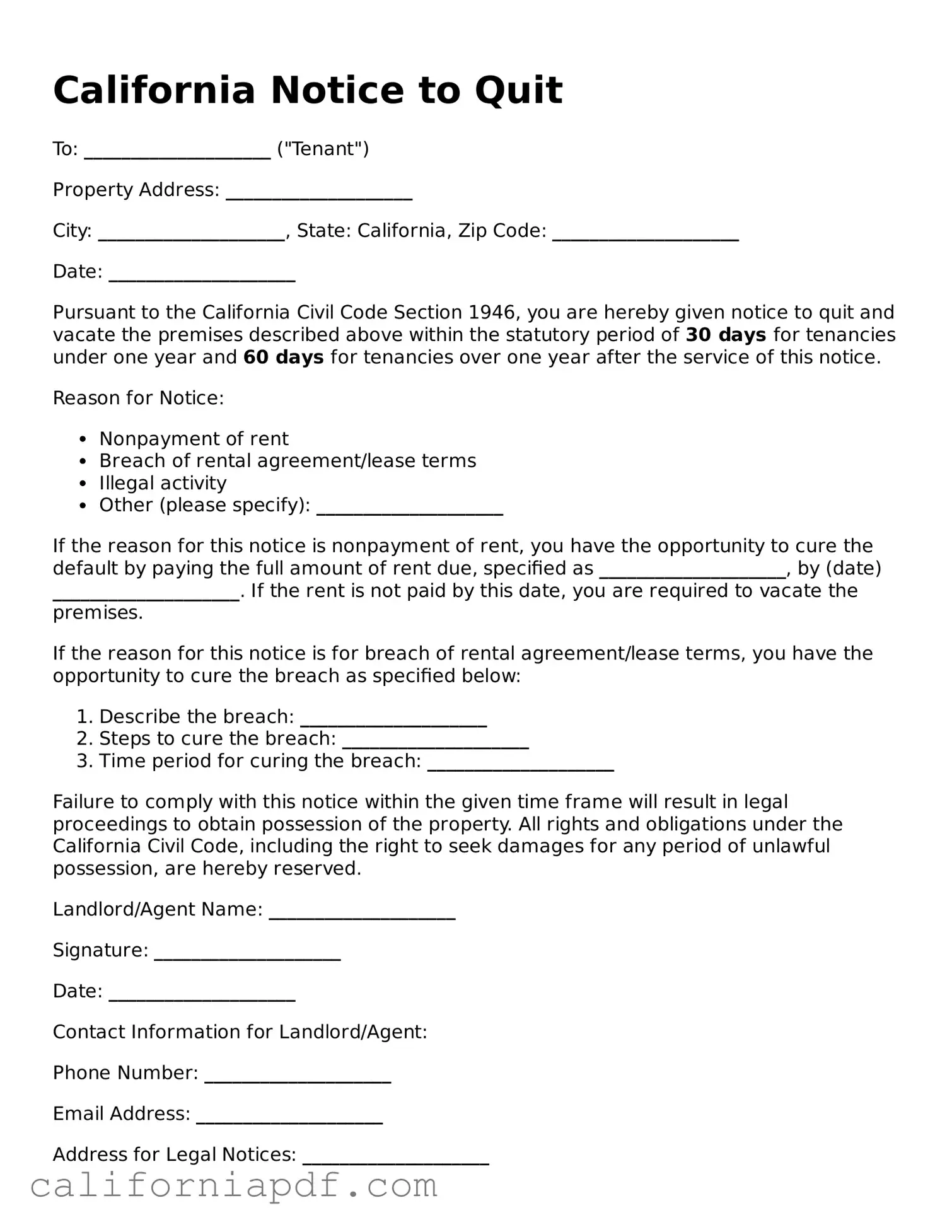California Notice to Quit
To: ____________________ ("Tenant")
Property Address: ____________________
City: ____________________, State: California, Zip Code: ____________________
Date: ____________________
Pursuant to the California Civil Code Section 1946, you are hereby given notice to quit and vacate the premises described above within the statutory period of 30 days for tenancies under one year and 60 days for tenancies over one year after the service of this notice.
Reason for Notice:
- Nonpayment of rent
- Breach of rental agreement/lease terms
- Illegal activity
- Other (please specify): ____________________
If the reason for this notice is nonpayment of rent, you have the opportunity to cure the default by paying the full amount of rent due, specified as ____________________, by (date) ____________________. If the rent is not paid by this date, you are required to vacate the premises.
If the reason for this notice is for breach of rental agreement/lease terms, you have the opportunity to cure the breach as specified below:
- Describe the breach: ____________________
- Steps to cure the breach: ____________________
- Time period for curing the breach: ____________________
Failure to comply with this notice within the given time frame will result in legal proceedings to obtain possession of the property. All rights and obligations under the California Civil Code, including the right to seek damages for any period of unlawful possession, are hereby reserved.
Landlord/Agent Name: ____________________
Signature: ____________________
Date: ____________________
Contact Information for Landlord/Agent:
Phone Number: ____________________
Email Address: ____________________
Address for Legal Notices: ____________________
